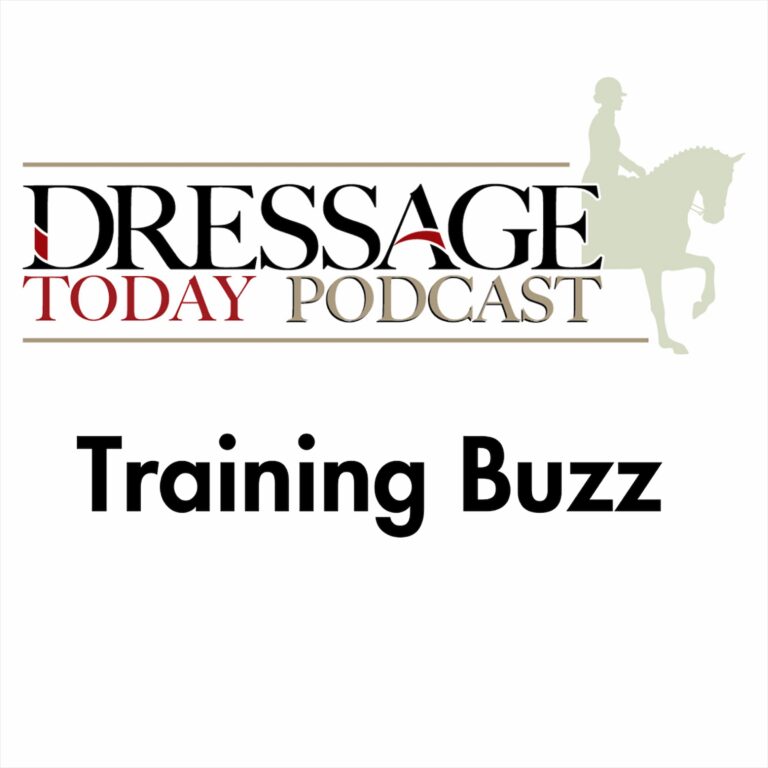Q: My horse anticipates the flying change every time I cross the diagonal. While I first thought it was a great thing, I now find it more annoying, as my horse doesn’t change from my aids. How can I solve this problem?
A: Congratulations on having such a clever horse! Your problem is common, as many horses delight in executing this newly learned exercise even when you don’t ask for it. The solution is simple and requires going back a few steps before moving forward again. This will help you find the underlying cause of the problem and will clarify your aids and teach your horse to wait and listen.
.jpg)
It is important that for now you refrain from riding flying changes for a bit until you have re-established the security of your basic work, which led up to teaching your horse the flying changes initially. When you can perform the exercises that follow smoothly and without resistance, you may begin to introduce the flying changes again.
Before you begin, be sure that you have a high-quality canter. This means that your horse is collected with good activity of the hindquarters, reliable straightness and is free from tension or resistance. He should be in a good self-carriage and should not lean on the reins for support. Your half halts must be well-established and the transitions within the canter and between canter and walk/trot should be smooth and free from resistance.
Spend a few days (or weeks, depending on your progress) making sure you can calmly and reliably perform these exercises. Then, simply replace some of the simple changes with flying changes. If you encounter tension from anticipation, return to one or more of the exercises until calmness and confidence are restored, then try a change again. The goal is not to take away your horse’s desire to perform a change, but only to ask him to wait for your aid and perform it when you ask.
The Exercises
First, test your horse’s balance and the effectiveness of your aids by riding canter–trot–canter transitions and canter–walk–canter transitions on a 20-meter circle. Make sure each transition is balanced, supple and straight with no resistance. When this goes smoothly, you are ready for work on the diagonals.
1. Canter–trot–canter. Proceed in collected canter across a diagonal with a transition to trot at X, then at the end of the diagonal, strike off again on the new canter lead. Repeat from the other direction. Next, ride a change of lead through the trot over X, also from both directions. Ask yourself: “Is my horse balanced and straight in both transitions? Is there any resistance?” If so, go back to the work on the circle or try adding a 10-meter circle in the trot at X before striking off into the new canter. This redirects the horse’s attention and asks him to wait, balance and focus.
2. Simple change on the diagonal. In collected canter tracking right, head across the diagonal and ride a 10-meter volte to the right at X followed by a simple change, continuing across the diagonal on the left lead. Repeat from the left lead. Variation: Canter on the right lead across the diagonal. At X, ride a 10-meter volte right followed by a simple change, then ride immediately a 10-meter volte left, then canter the remainder of the diagonal. When this goes well, try a collected canter on the diagonal and a simple change at X without the 10-meter circles.
3. Counter canter followed by simple change. Ride across the diagonal in collected canter and continue in counter canter through the corner. Ride a simple change in the middle of the short side. Variation: Continue in counter canter through the second corner as well and ride the simple change in the middle of the long side.
4. Transitions within the canter on a diagonal. Ride across the diagonal in collected canter. Ride a few steps of medium canter over X, then collect again and ride counter canter through the corner. Ask for a simple change in the middle of the short side or continue in counter canter through both corners and ride the simple change on the long side.
Once your horse is more attentive and on your aids from these exercises, you can begin to replace some of the simple changes with flying changes. Praise him profusely when he waits for your aids and performs a nice balanced flying change. Be prepared to go immediately back to some of the exercises if he begins anticipating again. It is useful to alternate or combine the exercises so that your horse does not know in advance whether he will be asked for a simple change, a flying change or a transition.
Once you have attained a successful result, leave the changes for the day and move on to something else entirely or better yet, reward your horse by ending the day’s session. Before long, you will have a calm, attentive horse who waits for your aids.
Sandra C. Hotz
is an FEI four-star USEF “S” judge. Her judging highlights include four U.S. Dressage Championships, U.S. Young and Developing Horse Championships, Central American/Caribbean Games, Mexican National Championships, FEI World Cup Qualifiers, FEI Nations Cup, NAJYRC and U.S. Regional Championships. She has trained young horses and riders to the FEI level and spent extensive time riding in Germany. An active trainer and coach, she conducts clinics throughout the U.S. and recently taught the Master Class for trainers and judges in Sydney, Australia.











